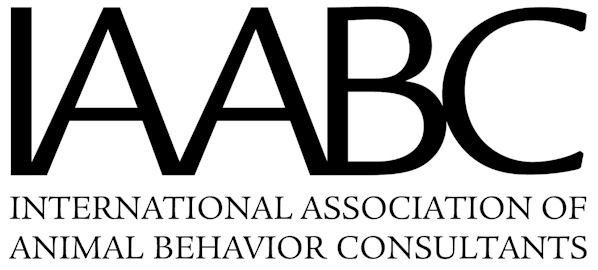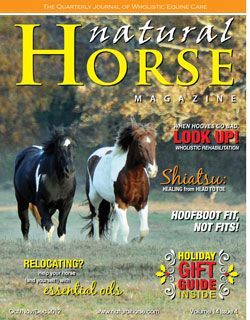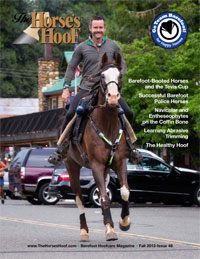 NOTES FROM SUSAN GARLINGHOUSE EQUINE NUTRITION &
NOTES FROM SUSAN GARLINGHOUSE EQUINE NUTRITION &
RESEARCH
AVS 303: Feed Preparation and Processing
Feed processing methods may be chemical, thermal, mechanical (or combination)
Processing may also include microbial fermentation ,ie ensiling
Processing does one or more of the following:
alters physical form of particle size
prevents spoilage
isolate specific parts of a seed or plant (separate corn grain fromplant,
but also corn starch from grain)
improves palatability
inactivate toxins or antinutritional factors
improve handling (chopped hay can be fed more easily by mechanicalfeeders
than can baled hay)
Processing becomes more important as level of production increases (whenmax
production is desired)
Not so important in band of sheep on rangeland that don’t need to growat
any specific rate
Very important in intensive production such as poultry, swine confinement
operation, dairy
Why, because heavily fed animals more likely to sort through feed andpick
out only the feed they like, or to refuse/waste feed if they don’tlike it.
Also, in ruminants, efficiency of digestion decreases as level of
consumption increases. This because food moves too rapidly throughrumen
for maximum fermentation and extraction of nutrients. Processing
counteracts part of this decline in digestion
Processing of grain can be divided into wet/dry methods, hot/cold methods
Cold-processing:
Hammer mill grinding – most common processing method. Used forboth grains
and roughages. Hammer mill is rotating metal bars that blowsground feed
through a screen, the finer the screen used, the smaller the particlesize.
Can produce anything from a cracked grain to a fine dust. Particlesize is
important because the smaller the particle size, the more SA you’reexposing
to digestive enzymes and microbes, but—ruminants and horses don’t like
eating very small particles, okay for poultry and swine.
Roller mill cracking and grinding – used only for grains, not roughages.
Grain goes between two metal rolls, particle size controlled by howfar
apart the rollers are. Particle size range from cracked grainto fine
powder (fines). Does produce as much dust as hammer mill processing,but
doesn’t grind hulls as well as hammer mill.
Soaking and reconstitution – two similar processes, where grain is soaked
prior to feeding. In soaking, feed is soaked in water, sometimes with heat
for 12-24 hours. Increases palatability, but not marked increases in
digestibility. In reconstitution, enough water is added to wholegrains to
increase moisture content to 25-30% and kept in oxygen-limited silofor
14-21 days. Some fermentation takes place. Increases palatability and feed
efficiency, but not enough to warrant the amount of work and storage space
required.
High Moisture Grain – Grain harvested at high moisture content (20 -35%),
sometimes ground or rolled, treated with 1 – 1 ½ % acid and stored in a silo
or under plastic. Acids used to preserve are primarily propionic,or
mixture of propionic with acetic or formic acid. Feed efficiency is higher
than for dried grains (no matter how dried grains are processed), but harder
to store and transport. Mostly used when weather conditions don’t allow for
complete drying of grains in the field prior to harvesting. Candry grains
artificially, but may be more expensive than storing as high-moisturegrain.
Hot processing methods:
Includes steam rolling/flaking, extruding, pelleting.
Steam rolling/flaking – in rolling, grain is exposed to hot steam for5
minutes before rolling to soften grain. In steam flaking, steamed for 15-30
minutes. Steam rolling has increased feed efficiency over dry grains, steam
flaking higher feed efficiency over steam rolling (exception barley-steam
rolling just as good as flaking). Both, better physical textures as fewer
fines, so ruminants like them better.
Pelleting – feed is ground, usually steamed (not always), then forced
through dies to produce pellets. Good use for fines that otherwise may not
be eaten. Animals like texture pellets more than they do a meal, less waste
in windy areas because fines blow away. Improvement in feed efficiencyis
due to grinding, not due to pelleting—the pelleting just makes thetexture
more appealing to the animal.
Extruding – process where feed is ground, heated and forced througha head
to form a long ribbon which is then chopped into desired particle sizes.
Used commonly in pet and human foods. Used with soybean products,because
heat is enough to destroy antinutritional factors in raw soybeans. Soybeans
contain several different compounds that inhibit amino acid utilization,
decrease protein digestibility or are goitrogenic factors, but allcan be
destroyed by heat. So soybeans are always heat-processed before being fed
to livestock (or pets or humans), extruding is one method.
Effect of processing on nutritive value:
Heating – excess heat causes Maillard reaction, reaction between proteins
and carbohydrates in feeds, lysine becomes partially unavailable. Primarily
a concern in plant protein sources (SBM, CSM< alfalfa, etc) or milk
products, as other animal source feeds don’t have enough carbohydrates
present to cause reaction to any significant extent.
Excessive heating of animal or fish proteins decreases feeding value
Heating of cereal grains gelatinizes starch content and increases feeding
value in dogs, cats, pigs, poultry, but not for ruminants or horses
Any processing method which increases surface area exposure to light,
oxygen, heat, etc is going to decrease vitamin content. Vitamins most
susceptible to heat are fat soluble vitamins (, thiamin, pantothenicacid,
folic acid and biotin.
Excessive heating of fats releases acreolins and increases oxidation=>
rancidity
Processing for specific species:
Swine: grinding and pelleting most common processing methods. Increases
digestibility, decrease in sorting. Max feed conversion (numberof pounds
of feed required per pound of gain) produced with fine grinding (.16cm
screen), also develop stomach and esophageal ulcers, so medium grind(1.27
cm) better.
Screen size 0.16 1.27 2.54
ADG, kg .65 .63 .63
Feed conversion 3.19 3.56 3.67
Pelleting – 9-10% improvement in feed conversion, gain weight at samerate,
but eat slightly less and waste less. Pigs like physical textureof
pellets, eliminates sorting. Alfalfa is primary roughage fed,but because
of limited ability to digest roughages, relatively small portion of ration.
If fed as hay or meal, pigs tend to waste a lot, so usually incorporated
into pellet.
Horses – Pelleting, cubing feeds has very little or no effect on rate of
digestibility in horses. In horses with good teeth, no increase in
digestibility by flaking, cracking, etc. The advantages in
processing/pelleting feeds is to decrease waste, eliminate sorting,a llow
use of fine particles (horses don’t like fines), and easier handling,
transport and storage:
Ton of hay cubes occupies 60-70 cubic feet storage
baled hay 200-330 cubic feet
loose hay 450-600 cubic feet
Horses eating pelleted hay also produce less feces, less labor costs in
cleanup. Less feces is not due to increased digestibility ornutrient
retention, is due to decreased (6% less) water content (theory of increased
chance of feed impactions)
Increased feed intake because of less gut fill, useful if you need
additional feed intake or don’t want “hay belly” look in show horses.
Horses can be fed 100% of their ration as pellets or cubes without
physiological harm. However, feeding pellets = decreased feeding time ( 25%
less time to eat pellets than same amount of loose hay). Mayincrease
incidence of choke, although uncommon problem.
In cattle, feeding all pellets or cubes may produce progressive enteritis,
not investigated in horses, but indications that may be true for horses as
well. Prevented by 25% of forage ration as hay.
Feeding pellets doesn’t satisfy grazing instinct, so increase in wood
chewing four times over that in horses fed loose hay or cubes. Recommend at
least 25% of ration in the form of long-stem hay to satisfy grazing instinct
and provide entertainment.
(NOTE: The article is copied from Susan Garlinghouse’s Midterm notes and is not necessarily the view of PENZANCE i.e. … “Horses can be fed 100% of their ration as pellets or cubes without physiological harm.” PENZANCE empirically disagrees with that statement. There may be other statements within the text of these notes with which PENZANCE disagrees. However, the information given re: different types of processing and the results in loss of nutrition are agreeable. )











Reblogged this on researchesofjoannemariesworld and commented:
my horse is 17 and is kept in a dry lot, fed community hay and grain, his weight was up for awhile but now its going down. I’m going to wait until the teeth float to determine more